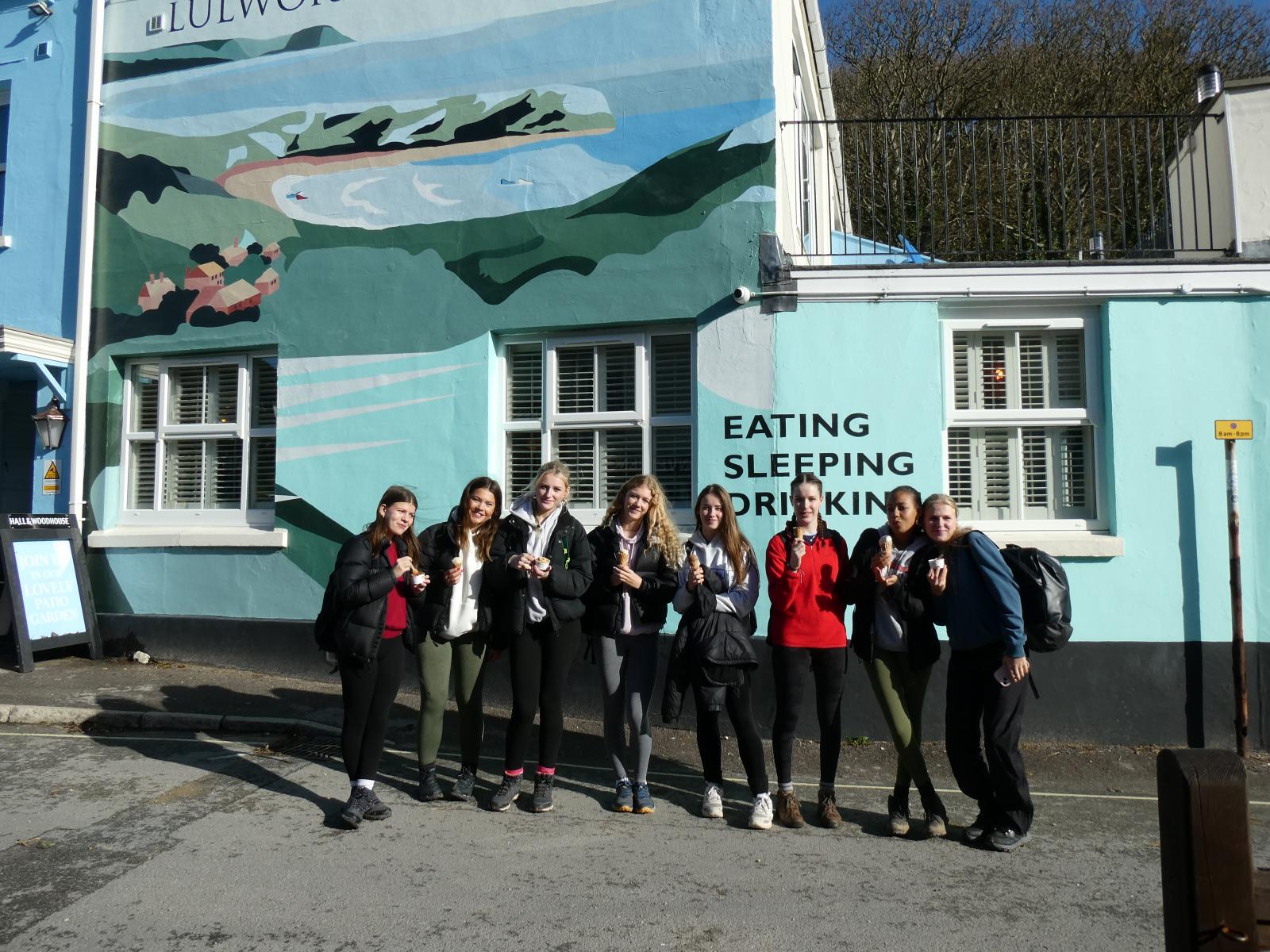Year 12 Geographers visit Dorset

The Year 12 Geographer went on a field trip to Dorset to prepare for their NEA fieldwork study.
18/10/24-20/10/24- The Year 12 Residential.
We set off around 8:00am, with tired eyes, to Dorset, for a weekend of insightfulness and adventure. Our first stop was the famous town of Lyme Regis, known for its history of palaeontology and coastal landscapes. We discussed how features, that we learnt in class were formed and got to explore and find lunch before heading back on the coach. The next location was Chesil Beach, a shingle barrier beach that is a depositional landform. The area is known to be a high energy coastline, great for windsurfing and other water sports. We were there to learn how to accurately measure rocks and pebbles, skills that will be great for when we choose our fieldwork project in the summer.

Exhausted after a competition of rock stacking and attempting to not lose our booklets due to the winds, we clambered back on the bus, ready to rest and relax at the Swanage Youth Hostel. We spent the evening, first with dinner at the hostel, then gambling at the arcade on the 2p machines, winning tickets and attempting to win prizes on the games.
Day two was a busy day, filled with walking up hills, ice cream and bowling. In the morning, we fuelled ourselves with a wonderful breakfast, knowing we needed energy for what was to come. The sight of the Jurassic coast is something unbeatable, especially Lulworth Cove. Its cliffs capturing the sun and the waters blue, like a tropical beach (yet slightly colder).

Before our walk up the steep hill, we were treated to an ice cream, which motivated and energised us while crawling up the hill. At the top the views did not disappoint, the views spanned across the horizon and your eye could not miss the sight of the magnificent Durdle Door, the well-known arch made of Purbeck limestone, a strong resistant rock. We ate lunch then, set of again back to Swanage, to measure the impact of groynes (coastal defence) along the bay. We talked about how these groynes, have helped locally (due to interrupting longshore drift), but how it is negatively affecting the sediment cell further along the coast. We learnt some more recording techniques, which will help us when recording our own fieldwork. In the evening, we went bowling, competing against our friends to see who would get the first strike.
The weather was not on our side for the last day; however, it made it more eventful. Walking to the sand dunes (at Studland Bay) so we could analyse the psammosere (succession of sand dunes), where we jumped and dodged waves. We used many methods to measure our data which made this day very informative. Before departing we had a picnic – in the rain- while discussing the whole weekend – an insightful adventure.

Overall, this weekend was very enjoyable but also useful and informative. Thank you so much to the geography department for organising this trip as the whole of Year 12 geographers are very grateful for all the experiences you gave us.

Lily Roberts Year 13
